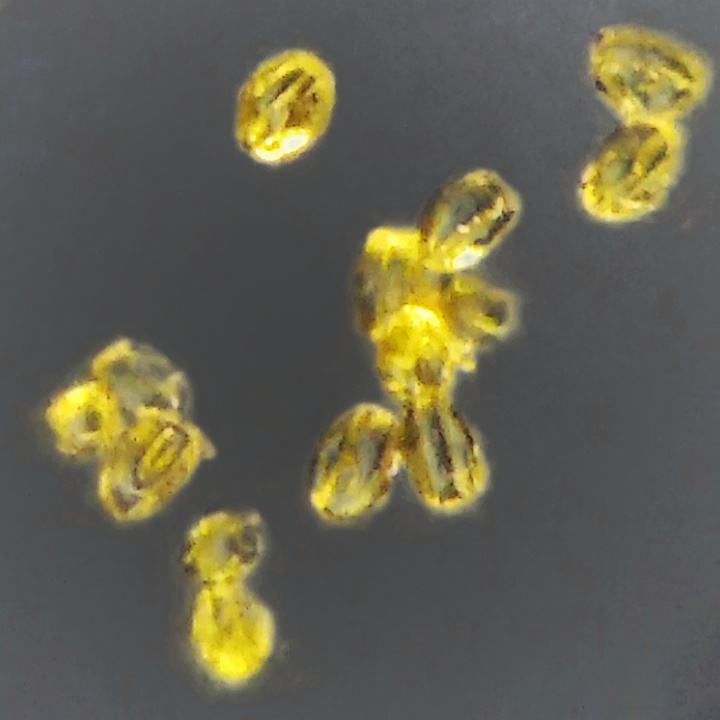|
Neem
''Azadirachta indica'', commonly known as neem, margosa, nimtree or Indian lilac, is a tree in the mahogany family Meliaceae. It is one of the two species in the genus '' Azadirachta''. It is native to the Indian subcontinent and to parts of Southeast Asia, but is naturalized and grown around the world in tropical and subtropical areas. Its fruits and seeds are the source of neem oil. ''Nim'' is a Hindustani noun derived from Sanskrit ''nimba'' (). Description Margosa is a fast-growing tree that can reach a height of , and rarely . It is evergreen, shedding many of its leaves during the dry winter months. The branches are wide and spreading. The fairly dense crown is roundish and may reach a diameter of . The opposite, pinnate leaves are long, with 20 to 30 medium to dark green leaflets about long. The terminal leaflet often is missing. The petioles are short. White and fragrant flowers are arranged in more-or-less drooping axillary panicles which are up to long. The i ... [...More Info...] [...Related Items...] OR: [Wikipedia] [Google] [Baidu] |
Neem Oil
Neem oil, also known as margosa oil, is a vegetable oil pressed from the fruits and seeds of the neem (''Azadirachta indica''), a tree which is indigenous to the Indian subcontinent and has been introduced to many other areas in the tropics. It is the most important of the commercially available products of neem, and is a potent pesticide used in organic farming. Composition Azadirachtin is the most well known and studied triterpenoid in neem oil. nimbin (chemical), Nimbin is another triterpenoid which has been credited with some of neem oil's properties as an antiseptic, antifungal, antipyretic and antihistamine. Uses Ayurveda Neem oil has a history of use in Ayurvedic traditional medicine, folk medicine. Pesticide Formulations that include neem oil have found wide usage as a biopesticide for horticulturists and for organic farming, as it repels a wide variety of insect pests including mealy bugs, beet armyworms, aphids, cabbage worms, thrips, whiteflies, mites, fungu ... [...More Info...] [...Related Items...] OR: [Wikipedia] [Google] [Baidu] |
Melia Azedarach
''Melia azedarach'', commonly known as the chinaberry tree, pride of India, bead-tree, Cape lilac, syringa berrytree, Persian lilac, Indian lilac, or white cedar, is a species of deciduous tree in the mahogany family (biology), family, Meliaceae, that is native to Indomalayan realm, Indomalaya and Australasian realm, Australasia. Description The fully grown tree has a rounded crown, and commonly measures tall, exceptionally . The leaves are up to long, alternate, long-petioled, two or three times compound (odd-pinnate); the leaflet (botany), leaflets are dark green above and lighter green below, with serrate margins. The flowers are small and fragrant, with five pale purple or lilac petals, growing in clusters. The fruit is a drupe, marble-sized, light yellow at maturity, hanging on the tree all winter, and gradually becoming wrinkled and almost white. ''Melia azedarach'' has a short lifespan, averaging about 20 years. Chemistry Italo et al. 2009 and Safithri and Sa ... [...More Info...] [...Related Items...] OR: [Wikipedia] [Google] [Baidu] |
Azadirachta
''Azadirachta'' is a genus of two species of trees in the mahogany family Meliaceae. Numerous species have been proposed for the genus but only two are currently recognized, '' Azadirachta excelsa'' and the economically important tree '' Azadirachta indica'', the neem tree, from which neem oil is extracted. Both species are native to the Indomalaysian region, and ''A. indica'' is also widely cultivated and naturalized outside its native range. Medicinal properties have been attributed to the resin derived from the trees in the traditional medicine of India. One of the components of this resin has been found to be an effective insecticide; see azadirachtin. Another component is an effective anti-fungal; see '' Azadirachta indica''. These species should not be confused with ''Melia azedarach'', which is a tree in a different genus of the family Meliaceae. Taxonomy The genus ''Azadirachta'' was established by Adrien-Henri de Jussieu in 1830. In 1753, Carl Linnaeus had descri ... [...More Info...] [...Related Items...] OR: [Wikipedia] [Google] [Baidu] |
India
India, officially the Republic of India, is a country in South Asia. It is the List of countries and dependencies by area, seventh-largest country by area; the List of countries by population (United Nations), most populous country since 2023; and, since its independence in 1947, the world's most populous democracy. Bounded by the Indian Ocean on the south, the Arabian Sea on the southwest, and the Bay of Bengal on the southeast, it shares land borders with Pakistan to the west; China, Nepal, and Bhutan to the north; and Bangladesh and Myanmar to the east. In the Indian Ocean, India is near Sri Lanka and the Maldives; its Andaman and Nicobar Islands share a maritime border with Thailand, Myanmar, and Indonesia. Modern humans arrived on the Indian subcontinent from Africa no later than 55,000 years ago., "Y-Chromosome and Mt-DNA data support the colonization of South Asia by modern humans originating in Africa. ... Coalescence dates for most non-European populations averag ... [...More Info...] [...Related Items...] OR: [Wikipedia] [Google] [Baidu] |
Meliaceae
Meliaceae, the mahogany family, is a flowering plant family of mostly trees and shrubs (and a few herbaceous plants, mangroves) in the order Sapindales. They are characterised by alternate, usually pinnate leaves without stipules, and by syncarpous, apparently bisexual (but actually mostly cryptically unisexual) flowers borne in panicles, cymes, spikes or clusters. Most species are evergreen, but some are deciduous, either in the dry season or in winter. The family includes about 53 genera and about 600 known species, with a pantropical distribution; one genus ('' Toona'') extends north into temperate China and south into southeast Australia, another (''Synoum'') into southeast Australia, and another (''Melia'') nearly as far north. They most commonly grow as understory trees in rainforests, but are also found in mangroves and arid regions. The fossil record of the family extends back into the Late Cretaceous. Uses Various species are used for vegetable oil, soap-making, i ... [...More Info...] [...Related Items...] OR: [Wikipedia] [Google] [Baidu] |
Seed
In botany, a seed is a plant structure containing an embryo and stored nutrients in a protective coat called a ''testa''. More generally, the term "seed" means anything that can be Sowing, sown, which may include seed and husk or tuber. Seeds are the product of the ripened ovule, after the embryo sac is fertilization, fertilized by Pollen, sperm from pollen, forming a zygote. The embryo within a seed develops from the zygote and grows within the mother plant to a certain size before growth is halted. The formation of the seed is the defining part of the process of reproduction in seed plants (spermatophytes). Other plants such as ferns, mosses and marchantiophyta, liverworts, do not have seeds and use water-dependent means to propagate themselves. Seed plants now dominate biological Ecological niche, niches on land, from forests to grasslands both in hot and cold climates. In the flowering plants, the ovary ripens into a fruit which contains the seed and serves to disseminate ... [...More Info...] [...Related Items...] OR: [Wikipedia] [Google] [Baidu] |
Drupe
In botany, a drupe (or stone fruit) is a type of fruit in which an outer fleshy part (exocarp, or skin, and mesocarp, or flesh) surrounds a single shell (the ''pip'' (UK), ''pit'' (US), ''stone'', or ''pyrena'') of hardened endocarp with a seed (''kernel'') inside. Drupes do not split open to release the seed, i.e., they are dehiscence (botany), indehiscent. These fruits usually develop from a single carpel, and mostly from flowers with Superior ovary, superior ovaries (polypyrenous drupes are exceptions). The definitive characteristic of a drupe is that the hard, woody (lignified) stone is derived from the Ovary (botany), ovary wall of the flower. In an aggregate fruit, which is composed of small, individual drupes (such as a raspberry), each individual is termed a drupelet, and may together form an aggregate fruit. Such fruits are often termed ''berries'', although botanists use a Berry (botany), different definition of ''berry''. Other fleshy fruits may have a stony enclosur ... [...More Info...] [...Related Items...] OR: [Wikipedia] [Google] [Baidu] |
Glossary Of Botanical Terms
This glossary of botanical terms is a list of definitions of terms and concepts relevant to botany and plants in general. Terms of plant morphology are included here as well as at the more specific Glossary of plant morphology and Glossary of leaf morphology. For other related terms, see Glossary of phytopathology, Glossary of lichen terms, and List of Latin and Greek words commonly used in systematic names. A B ... [...More Info...] [...Related Items...] OR: [Wikipedia] [Google] [Baidu] |
Pinnate
Pinnation (also called pennation) is the arrangement of feather-like or multi-divided features arising from both sides of a common axis. Pinnation occurs in biological morphology, in crystals, such as some forms of ice or metal crystals, and in patterns of erosion or stream beds. The term derives from the Latin word ''pinna'' meaning "feather", "wing", or " fin". A similar concept is "pectination", which is a comb-like arrangement of parts (arising from one side of an axis only). Pinnation is commonly referred to in contrast to "palmation", in which the parts or structures radiate out from a common point. The terms "pinnation" and "pennation" are cognate, and although they are sometimes used distinctly, there is no consistent difference in the meaning or usage of the two words.Jackson, Benjamin, Daydon; ''A Glossary of Botanic Terms with their Derivation and Accent''. Gerald Duckworth & Co. London, 4th ed 1928. Plants Botanically, pinnation is an arrangement of discrete ... [...More Info...] [...Related Items...] OR: [Wikipedia] [Google] [Baidu] |
Protantrism
Sequential hermaphroditism (called dichogamy in botany) is one of the two types of hermaphroditism, the other type being simultaneous hermaphroditism. It occurs when the organism's sex changes at some point in its life. A sequential hermaphrodite produces eggs (female gametes) and sperm (male gametes) at different stages in life. Sequential hermaphroditism occurs in many fish, gastropods, and plants. Species that can undergo these changes do so as a normal event within their reproductive cycle, usually cued by either social structure or the achievement of a certain age or size. In animals, the different types of change are male to female (protandry or protandrous hermaphroditism), female to male (protogyny or protogynous hermaphroditism), and bidirectional (serial or bidirectional hermaphroditism). Both protogynous and protandrous hermaphroditism allow the organism to switch between functional male and functional female. Bidirectional hermaphrodites have the capacity for sex change ... [...More Info...] [...Related Items...] OR: [Wikipedia] [Google] [Baidu] |
Inflorescence
In botany, an inflorescence is a group or cluster of flowers arranged on a plant's Plant stem, stem that is composed of a main branch or a system of branches. An inflorescence is categorized on the basis of the arrangement of flowers on a main axis (Peduncle (botany), peduncle) and by the timing of its flowering (determinate and indeterminate). Morphology (biology), Morphologically, an inflorescence is the modified part of the Shoot (botany), shoot of spermatophyte, seed plants where flowers are formed on the axis of a plant. The modifications can involve the length and the nature of the internode (botany), internodes and the phyllotaxis, as well as variations in the proportions, compressions, swellings, adnations, connations and reduction of main and secondary axes. One can also define an inflorescence as the reproductive portion of a plant that bears a cluster of flowers in a specific pattern. General characteristics Inflorescences are described by many different charact ... [...More Info...] [...Related Items...] OR: [Wikipedia] [Google] [Baidu] |



